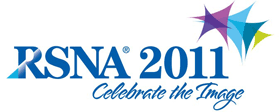
Abstract Archives of the RSNA, 2011
Hyun Woo Goo MD, Presenter: Nothing to Disclose
Thomas Allmendinger, Abstract Co-Author: Employee, Siemens AG
To assess the effect of combined ECG- and respiratory triggering on respiratory motion artifacts on unenhanced chest CT in free-breathing children.
In 15 children (median age 19 months, range 6 months–8 years; 7 boys), unenhanced ECG-triggered chest CT using dual-source CT was obtained during free breathing with and without additional respiratory-triggering on two different days. A pressure-sensing belt of a respiratory gating system (AZ-733V) was used to obtain respiratory triggering. The degree of respiratory motion artifacts was graded on a 4-point scale (1: excellent image quality) on coronal and sagittal images. CT dose estimates were calculated from dose length products and conversion factors (ICRP 103). Artifacts grades and CT dose estimates were compared between the two CT studies with and without additional respiratory triggering. A p-value < 0.05 was considered significant.
Respiratory motion artifacts were significantly smaller on combined-triggered CT images (1.13±0.40) than on ECG-triggered CT images (2.20±0.96, p=0.003). There was no significant difference in CT dose estimates between combined-triggered (1.01±0.34 mSv) and ECG-triggered CT images (1.10±0.28 mSv, p=0.177).
Additional respiratory-triggering significantly reduces respiratory motion artifacts on unenhanced ECG-triggered chest CT images in free-breathing children.
Combined ECG- and respiratory-triggered data acquisition has a great potential to increase image quality of unenhanced chest CT in free-breathing children.
Goo, H,
Allmendinger, T,
Free-breathing Unenhanced Chest CT in Children: The Effect of Combined ECG and Respiratory-triggering on Respiratory Motion Artifacts. Radiological Society of North America 2011 Scientific Assembly and Annual Meeting, November 26 - December 2, 2011 ,Chicago IL.
http://archive.rsna.org/2011/11010622.html

